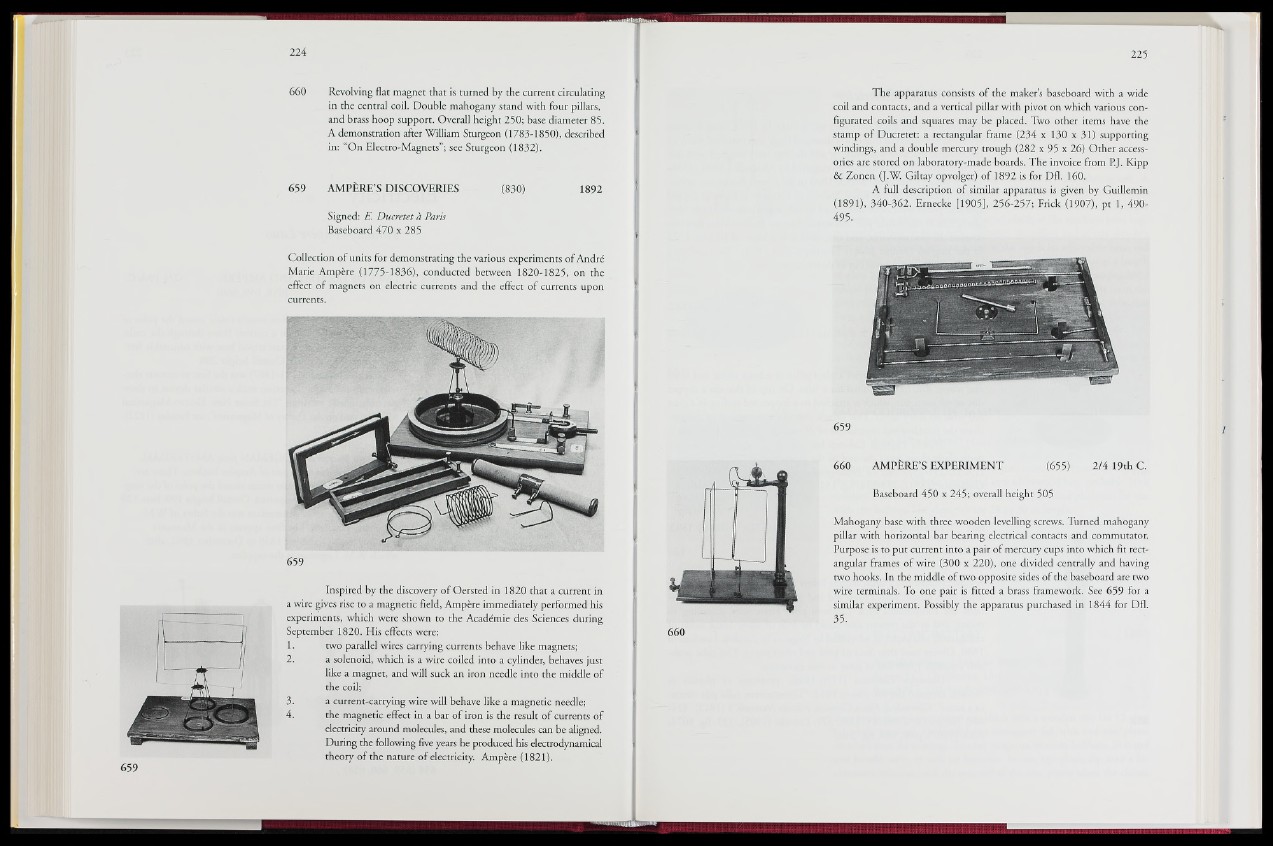
660 Revolving flat magnet that is turned by the current circulating
in the central coil. Double mahogany stand with four pillars,
and brass hoop support. Overall height 250; base diameter 85.
A demonstration after William Sturgeon (1783-1850), described
in: “On Electro-Magnets”; see Sturgeon (1832).
659 AMPÈRE’S DISCOVERIES (830) 1892
Signed: E. Ducretet à Paris
Baseboard 470 x 285
Collection of units for demonstrating the various experiments of André
Marie Ampère (1775-1836), conducted between 1820-1825, on the
effect of magnets on electric currents and the effect of currents upon
currents.
659
Inspired by the discovery of Oersted in 1820 that a current in
a wire gives rise to a magnetic field, Ampère immediately performed his
experiments, which were shown to the Académie des Sciences during
September 1820. His effects were:
1. two parallel wires carrying currents behave like magnets;
2. a solenoid, which is a wire coiled into a cylinder, behaves just
like a magnet, and will suck an iron needle into the middle of
the coil;
3. a current-carrying wire will behave like a magnetic needle;
4. the magnetic effect in a bar of iron is the result of currents of
electricity around molecules, and these molecules can be aligned.
During the following five years he produced his electrodynamical
theory of the nature of electricity. Ampère (1821).
The apparatus consists of the maker’s baseboard with a wide
coil and contacts, and a vertical pillar with pivot on which various configurated
coils and squares may be placed. Two other items have the
stamp of Ducretet: a rectangular frame (234 x 130 x 31) supporting
windings, and a double mercury trough (282 x 95 x 26) Other accessories
are stored on laboratory-made boards. The invoice from P.J. Kipp
& Zonen (J.W. Giltay opvolger) of 1892 is for Dfl. 160.
A full description of similar apparatus is given by Guillemin
(1891), 340-362. Ernecke [1905], 256-25^ Frick (1907), pt 1, 490-
495.
659
660 AMPERE’S EXPERIMENT (655) 2/4 19th C.
Baseboard 450 x 245; overall height 505
Mahogany base with three wooden levelling screws. Turned mahogany
pillar with horizontal bar bearing electrical contacts and commutator.
Purpose is to put current into a pair of mercury cups into which fit rectangular
frames of wire (300 x 220), one divided centrally and having
two hooks. In the middle of two opposite sides of the baseboard are two
wire terminals. To one pair is fitted a brass framework. See 659 for a
similar experiment. Possibly the apparatus purchased in 1844 for Dfl.
35.
660